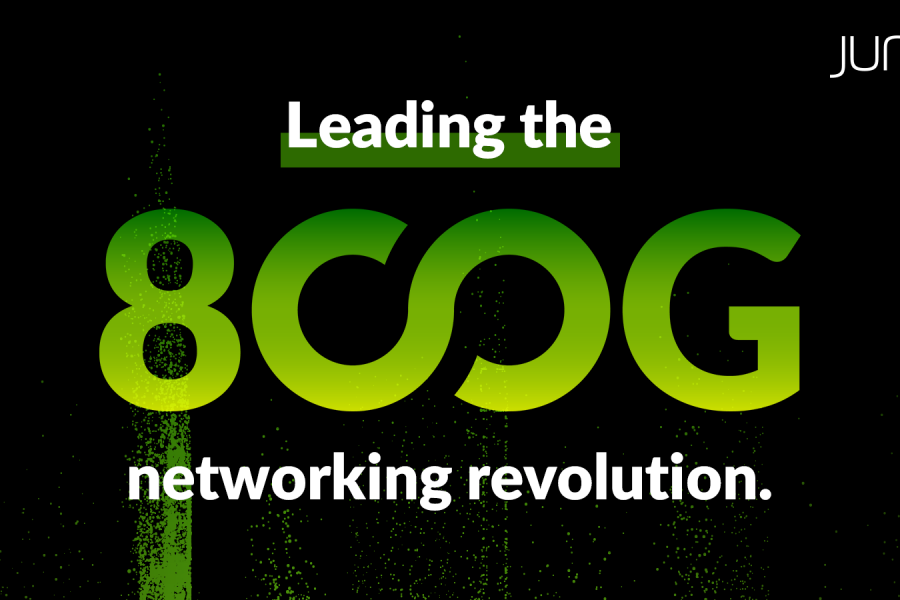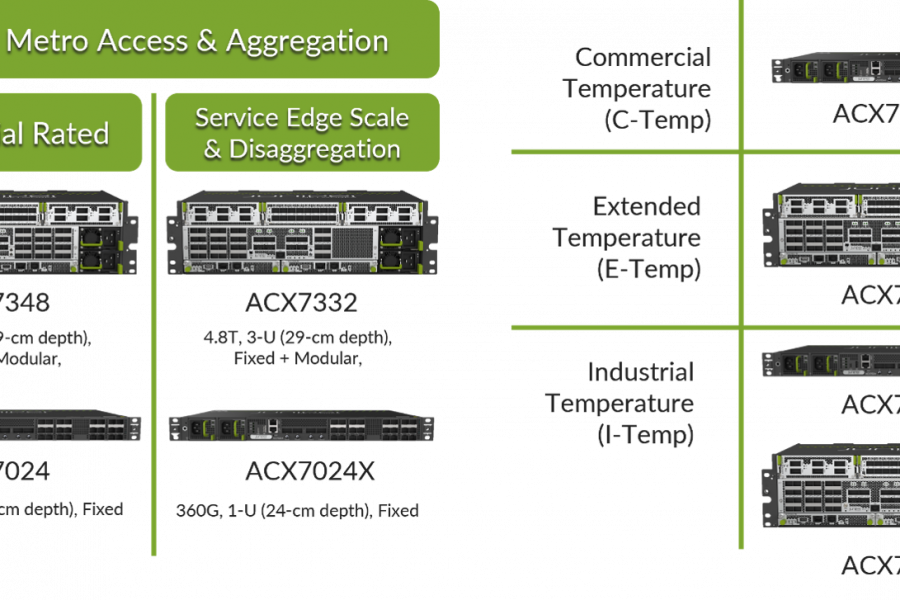This is the sixth in a series of seven blogs that focus on several areas of interoperability testing including Segment Routing, EVPN, SDN Controllers, Network Automation and Timing & Synchronization. The test report is publicly available and can be found here. See part five on Netconf/Yang controllers here.
In March 2020, Juniper Networks participated in the EANTC MPLS+SDN+NFV World Congress interoperability event to demonstrate a wide array of interoperability use cases. This blog highlights the capabilities of Juniper HealthBot when used in a multi-vendor environment acting as a gNMI-based streaming telemetry and analytics collector.
As networks evolve to accommodate exponential traffic growth, service providers, cloud providers and enterprises need a network analytics solution that provides real-time visibility into their network infrastructure. Combining the power of telemetry and machine learning, HealthBot automates network monitoring, diagnostics and root-cause analysis. It also provides predictive insights by aggregating, filtering and analyzing large volumes of real-time telemetry data. The data analytics capabilities include data mining, mathematical algorithms and machine learning. HealthBot also comes with several built-in network/device health monitoring profiles or playbooks which can be customized by the user. In addition, users can create their own playbooks.
At the back end, the versatile data-collection engine collects network data using multiple mechanisms, including streaming telemetry, NetFlow, NETCONF, SNMP and syslog. Users can even integrate the collected data into an existing data lake (e.g., Kafka) or integrate with any other streaming source (bring-your-own-ingest). There is an evolving global community of HealthBot users who are contributing their work to the HealthBot Playbook repository and promoting re-use.
HealthBot interoperability testing at EANTC focused on collecting device interface statistics, modeled using an OpenConfig data-model with the gNMI transport protocol. The test topology consisted of a collector (HealthBot) and two provider edge (PE) nodes (Adva & Delta) as shown in Figure 1 below.
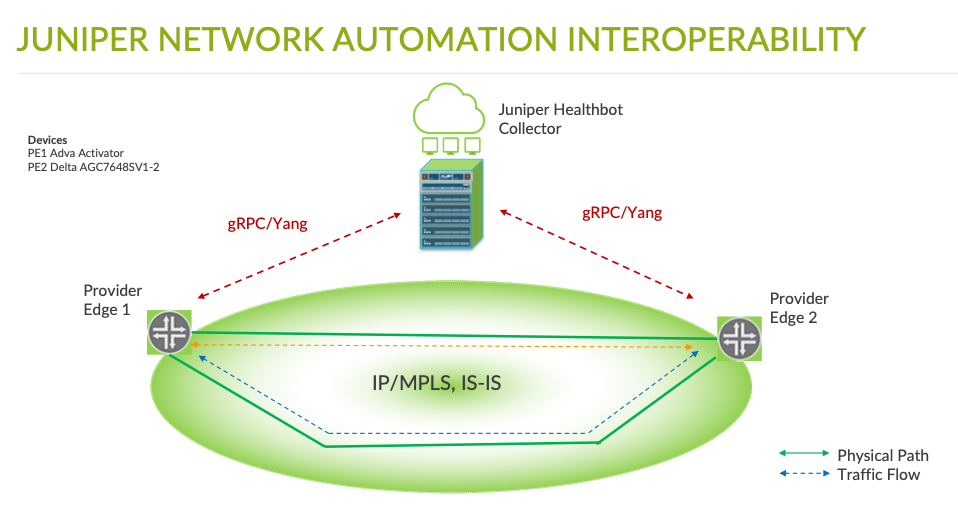
The PE nodes were configured with ISIS in the MPLS domain to provide routing for the internal provider network. The gRPC service was configured between the collector and the PE nodes. Bandwidth data defined in the OpenConfig YANG model (openconfig-if-ethernet.yang, version 2.7.2) was collected from the PE nodes. HealthBot successfully collected the interface incoming and outgoing octets from Adva and Delta PE nodes and calculated the octet difference with time and plotted them on a time series graph as shown in Figure 2.
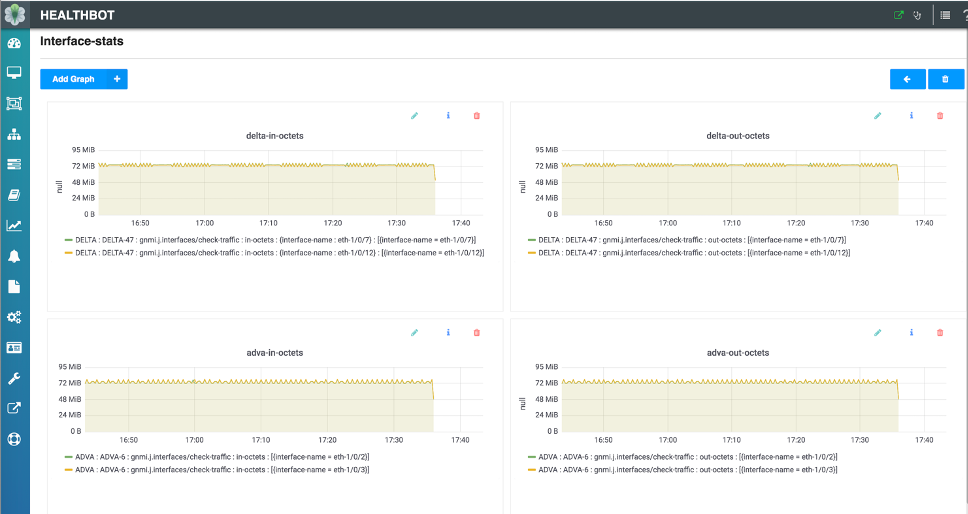
The interface statistics were subsequently used to raise alarms when the defined thresholds were crossed. An aggregated and summarized status of the network was presented on the HealthBot dashboard as shown in Figure 3.
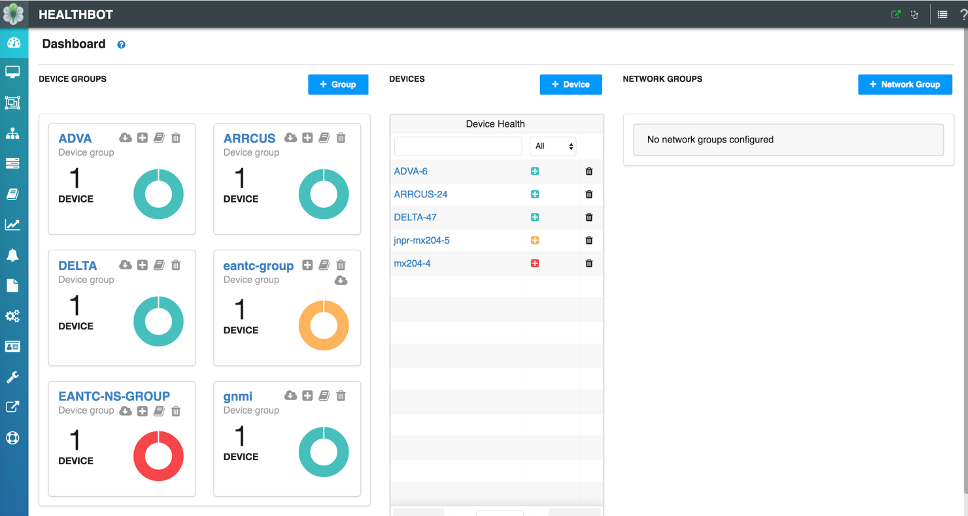
Juniper HealthBot demonstrated interoperability with Delta and Adva devices at EANTC and was also able to interoperate with Arrcus outside the EANTC platform. With an existing supported integration for Cisco’s IOS-XR and Ericsson, HealthBot is Juniper’s way forward with a multi-vendor tool for network health monitoring and diagnostics. A brief view of Juniper HealthBot closed-loop automation capabilities is presented below in Figure 4.
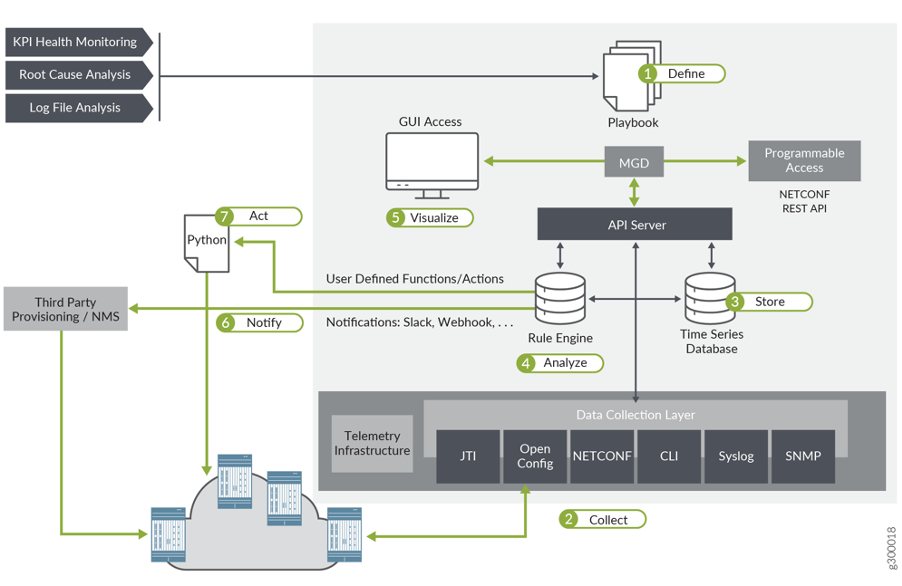
Juniper Technology Fuels the ‘Cloud + 5G + AI’ Era Transformation
With open, interoperable solutions, Juniper is providing a new generation of networking infrastructure to help our customers succeed in the ‘Cloud + 5G + AI’ era. Juniper continues to innovate and showcase leadership in Network Automation with a strong focus on multi-vendor closed-loop automation in the following use-cases:
- Traffic Blackhole Detection, Microburst and Memory Leak Detection
- Machine learning-based prediction, outlier and anomaly detection for 100+ system KPIs
- Fine-grained protocol level health monitoring (OSPF, BGP, ISIS etc.)
- Extensive BNG Health monitoring
- DC Fabric (EVPN-VXLAN) Health monitoring
Innovations like these don’t always capture the headlines. But talk to service providers and you’ll quickly realize that this is where the real revolution begins – in the trenches. In the next blog in this series, we will discuss the Timing and Synchronization aspects of the interoperability testing.
Explore automated next-generation data center operations and join interactive breakout sessions at our Juniper Virtual Summit on June 10 (US/EMEA) and June 11 (APAC).

